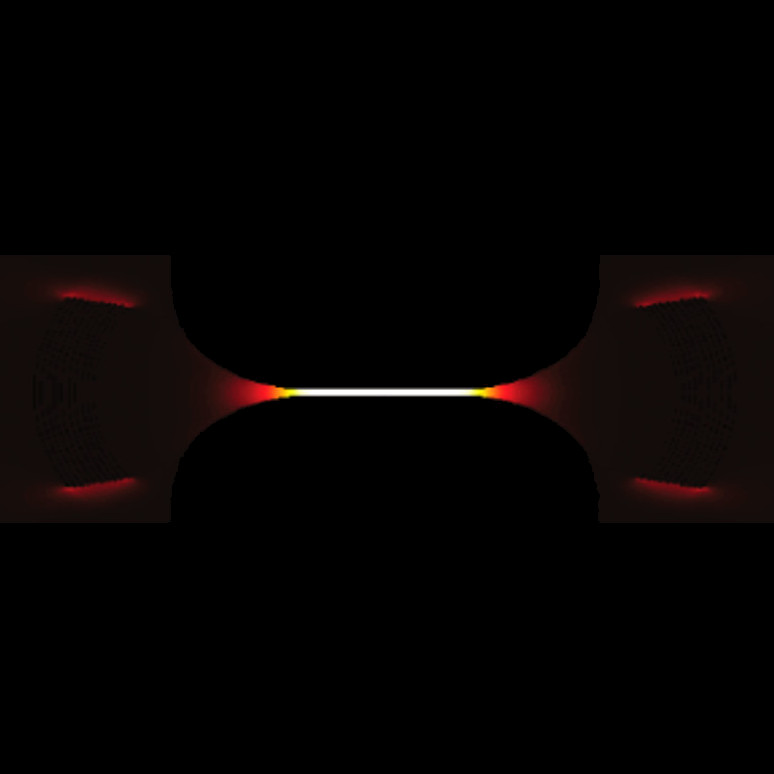Germanium (Ge) is a group IV semiconductor compatible with modern silicon electronics fabrication processes. Ge has an indirect bandgap, so ordinarily it is a poor optical emitter. However, the indirect band-edge is only 0.165 eV below the direct band-edge, and this offset can be decreased or even reversed by applying tensile strain, thus turning Ge into a direct-bandgap material suitable for optical emitters.
Finding suitable fabrication methods to heavily strain Ge while integrating high-Q optical cavities, minimizing non-radiative recombination, and avoiding free carrier absorption can be difficult, but if these obstacles can be overcome, tensile-strained Ge is an excellent candidate for constructing fast and efficient lasers directly alongside conventional silicon electronics.
- High-strain optical resonators capable of achieving 2.4% uniaxial tensile strain and >2,000 Q-factor in Ge nanowires. (Nano Lett., 2016)
- 0.7% biaxially strained Ge microdisks with a CMOS-compatible process. (Optics Express, 2015)
- Heterostructure effects and tunable band profiles in tensile-strained Ge nanowires. (Nano Lett., 2013)



